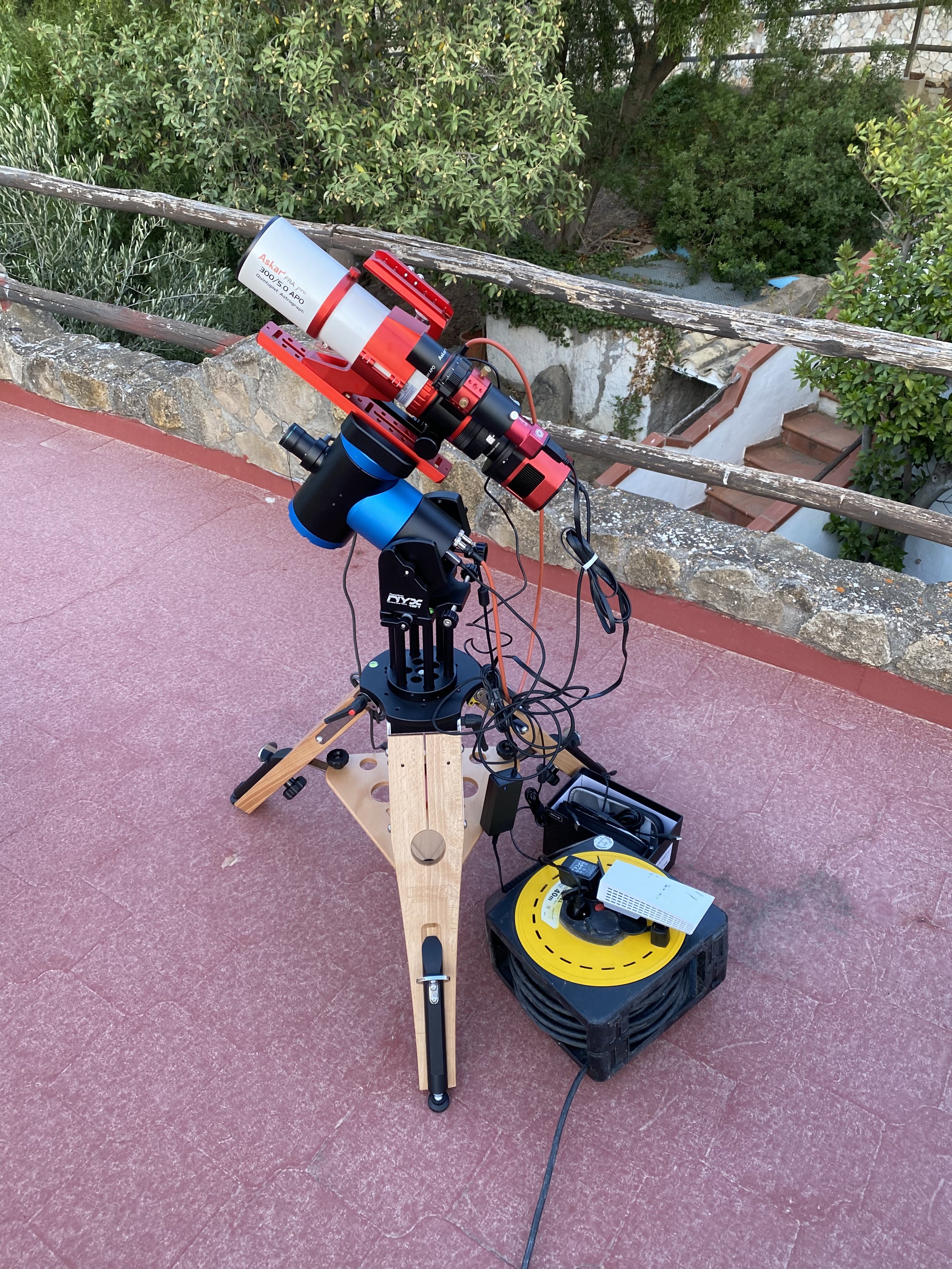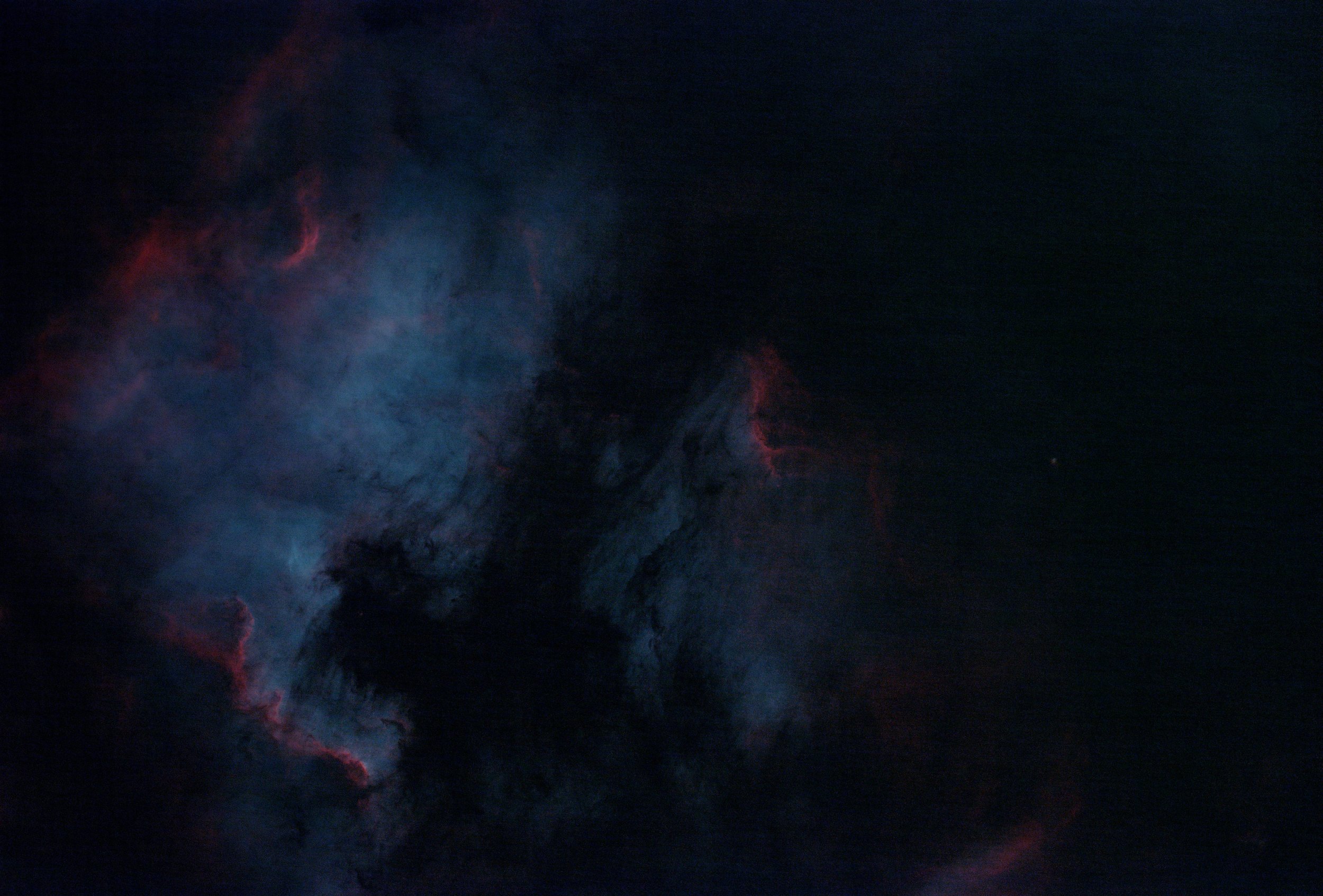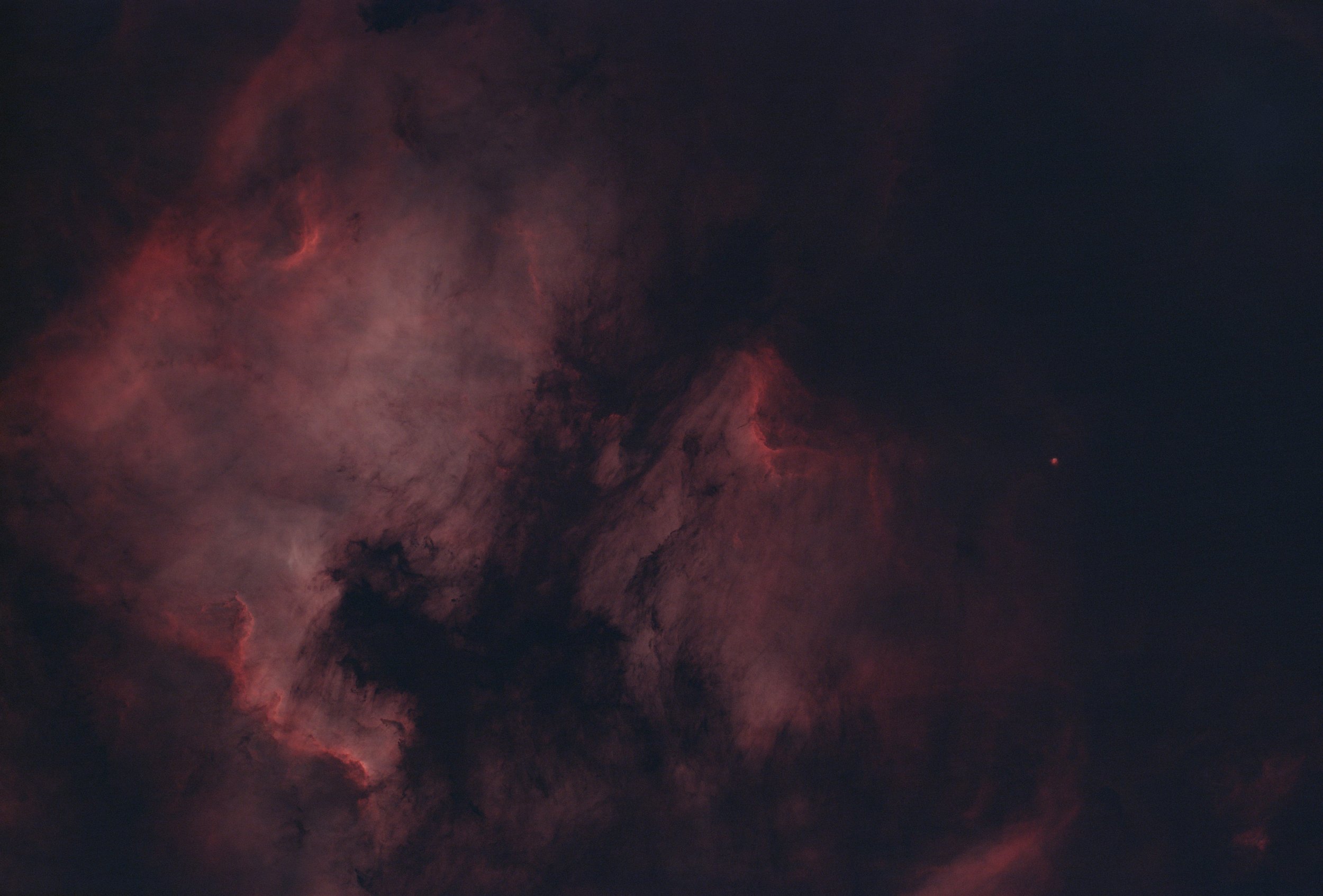Pelican Nebula … and North America Nebula
I got an amazing weather this year in Sardegna. I shot three objects, the previous post was about Veil (in order, it was the second target), now I post about my first target : the Pelican Nebula. I wanted it centered, but the North America Nebula was in the same field. I adjusted the two nebulas while my first goal was really the Pelican
This post is about my first target. I wanted the Pelican. While I setup my equipment, I was happy I didn’t forget any cables. Though, I got a weird experience with the airport security. My bag for the mount and telescope was a bit overweighted and I decided to split some few kilograms across other bags. I have a precious Allen keys set and I took it in my handbag … gosh I was wrong. The security stopped me and asked me to open my bag, they pointed my Allen keys set ! “That’s forbidden, that’s working tools”. I replied “Come on, that’s not a hammer, they’re not sharp … my electric tooth brush has this pin that is more dangerous and it’s ok!?”. I lost the argument and they throw away my set for destruction … (yeah, sure, no one will pick it up for their home …). While waiting for my flight, I ordered the same Allen keys set to be delivered to Sardegna …
My Allen keys set … :(
Anyway, back to Sardegna, I missed my keys set on the first days but it should be ok except for the focuser PrimaluceLabs Sesto Senso 2 …
Let’s start on this Pelican Nebula.
I got an horrendous night the week before on the continent. My shooting camera sent me errors about USB TImeOut, and I couldn’t get any picture. As I was saying in the previous post (Veil Nebula), I thought it was an electric issue, not enough amperes. I got the same thing on this first night of shooting in Sardegna. I got to investigate, and I figured that if I shutdown my guiding camera, everything is working fine. Okay, I’ll do my shooting without guiding … It means I need to shoot shortest exposure shots (one minute exposure per shot for instance).
Not a big deal, the weather is incredibly dry, and I can shoot all night long. Though, I need to buy a stronger power supply. I ordered a PegasusAstro 10Amp power supply and the new Nyx101 Saddle to ensure good power distribution once I’m back in Luxemburg.
I decided to go for some shots using only the filter UHC-S (60x60s). This way, I could get stars with right colors. Then, I went for 300 shots of 60 seconds with the Askar D1-HaOIII filter split in two nights.
Then, I decided to shoot 280 shots of 45 seconds with the Askar D2 SIIOII filter.
Sadly, I had to discard quite half of my shots in total because of some “not that round” stars. I probably got a better result with my guiding system … Anyway, despite getting a portion of my shots, I still have very enough. Here are the two master S2O3 and HaO3 :
I felt that these two nights gave me enough data ! I have a problem with Deneb star, there is on the final picture a halo not centered on it, and I believe it could be a tilt issue from my camera. Surely, I ‘ll have the opportunity to correct this on my next sessions for other objects, I need to investigate and improve myself.
You can see on the Exif below that the Guiding System is crossed out …
Exifs : Askar FRA300 + PegasusAstro Nyx-101 + PlayerOne Poseidon C Pro cooled at 0°C / Askar Duo Magic D1 filter 2” Halpha/OIII / Askar Duo Magic filter 2” SIIOIII / Baader filter UHC-S / - Guiding System Askar FMA135 with PlayerOne Ceres C
300 lights 60 seconds each - 153 selected for stacking (2 hours 33 min)
280 lights 45 seconds each - 169 selected for stacking (2 hours 6 min 45s)
60 lights 60 seconds each - 31 selected for stacking
50 flats Gain 120 filter D1 (didn’t do the flats with D2 nor UHC-S)
50 biases Gain 120
Stacked with Pixinsight (WBPP)- Post-Treatment with Pixinsight was a tough one.





